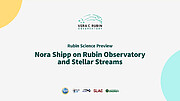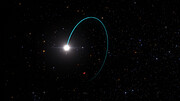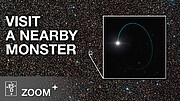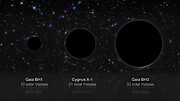These Chandra Instagram experiences join a space-themed collection in Instagram from recent years, that includes NASA mission control, the International Space Station, and the Perseverance Rover on Mars. The objects in the new Chandra Instagram collection include the Tycho supernova remnant, the Vela Pulsar, the Helix Nebula, the Cat’s Eye, and the Chandra spacecraft.
The new Instagram experiences are created from 3D models based on data collected by Chandra and other telescopes along with computer models. Traditionally, it has been very difficult to gather 3D data of objects in space due to their two-dimensional projection on the sky. New instruments and techniques, however, have allowed astronomers in recent years to construct data-driven models of what these distant objects look like in three dimensions.
These advancements in astronomy have paralleled the explosion of opportunities in virtual, extended, and augmented reality. Such technologies provide virtual digital experiences, which now extend beyond Earth and into the cosmos.
Tycho's Supernova Remnant Effect [More Effects]
Video Credit: Smithsonian/NASA/SAO/CXC;
Sonification: NASA/CXC/SAO/K.Arcand, SYSTEM Sounds (M. Russo, A. Santaguida)
Vela Pulsar: The Vela Pulsar is the aftermath of a star that collapsed, followed by an explosion that sent a remarkable storm of particles and energy into space. The Chandra X-ray Observatory and other telescopes captured this storm, seen here as a 3D model. At the center of Vela is a pulsar, a rapidly spinning dense star that sends beams of light out into space like a cosmic lighthouse.
Tycho's Supernova Remnant: Massive stars die in giant explosions called supernovas that can outshine an entire galaxy. After a supernova explosion, the remains of the star can become a spectacular and evolving cosmic monument to the now-deceased star. These remnants glow in X-ray light, which NASA’s Chandra X-ray Observatory can detect such as in this image of Tycho’s Supernova Remnant.
Helix Nebula:In about 5 billion years, our Sun will run out of fuel and expand, possibly engulfing Earth. These end stages of a star’s life can be utterly beautiful as is the case with this planetary nebula called the Helix Nebula. Astronomers study these objects by looking at all kinds of light, including X-rays that the Chandra X-ray Observatory sees.
Cat's Eye Nebula:Eventually, our Sun will run out of fuel and die (though not for about another 5 billion years). As it does, it will become like the object seen here, the Cat’s Eye Nebula, which is a planetary nebula. A fast wind from the remaining stellar core rams into the ejected atmosphere and pushes it outward, creating wispy structures seen in X-rays by Chandra and optical light by the Hubble Space Telescope.
Chandra Spacecraft: A quarter of a century ago, scientists began a quest to answer some of the biggest questions in the Universe. They have discovered many truths — and uncovered even more mysteries. Since it was launched into space in July 1999, NASA’s Chandra X-ray Observatory has changed our view of the Universe. With this telescope, we continue to see what is otherwise invisible. We are still learning, exploring, and expanding humanity’s grasp of what the Universe has to offer. Our X-ray legacy continues.
Visual Description:
The Vela Pulsar, the aftermath of a collapsed and exploded star sending a jet of particles into space. The pulsar resembles a soft, pillowy, lavender bean in a pocket of blue gas. A faint stream of gas, the X-ray jet, appears to shoot from the pocket, heading into the distance at our upper right. Purple markings in the lavender bean shape strongly resemble narrow eyes and an open mouth, giving the pulsar a squinting happy face. In this image, X-ray light detected by Chandra is shown in blues and purples.
The Tycho supernova remnant is a spherical cloud of reds, greens, and blues set against a starry sky. The cloud is ejected material still propagating from a star that exploded in 1572, as seen from Earth. Here, the supernova resembles a fluffy pink cotton ball. The dense, translucent cloud is streaked with hazy veins, and mottled with red and blue. The edges of the cloud appear to be highlighted in soft white. Upon close inspection, a thin red-violet line can be discerned around the outer edge of the multicolored cloud. The red-violet line shows where electrons have been accelerated to high energies, producing X-rays detected by Chandra. This provides evidence that supernova remnants are a major source of energetic particles, including electrons and protons, which continually hit Earth's atmosphere.
The Helix Nebula is a planetary nebula, the end phases of the life of a Sun-like star. Helix resembles a creature's eye, both in shape and in detail. At the center of the nebula, where the pupil would reside, an orb shaped cloud glows in dark pink. Surrounding the orb, where the colored iris of an eye would be, is a dramatic mix of color in blues, browns, and golds that appear somewhat striated, very similar to a human eye. These striations extend to the left and right of the otherwise circular iris structure, as though they had been gently pulled from the two o'clock and seven o'clock positions until the material formed faint wisps. Surrounding the iris structure are roughly spherical puffs of blue haze. The entire canvas is dotted with stars in red, green, and blue.
The Cat's Eye Nebula is an image of an ethereal shape surrounded by concentric circles. The shape is a huge cloud of gas and dust blown off of a dying star. The concentric circles are bubbles expelled by the star over time. The dust cloud resembles a translucent pastry pulled to golden yellow points near our upper right and lower left, with a blob of bright purple jelly inside the bulbous pale blue core. The jelly-like center represents X-ray data from Chandra. The outer cloud and translucent circles represent visible light data from the Hubble Space Telescope.
Fast Facts for Vela Pulsar:
Credit: X-ray: NASA/CXC/SAO; Optical: NASA/ESA/STScI; Image processing: NASA/CXC/SAO/J. Schmidt, K. Arcand
Scale: Image is about 4.8 arcmin (1.4 light-years) across
Category: Neutron Stars & X-ray Binaries
Coordinates (J2000): RA 08h 35m 20.60s | -45° 10' 35.00"
Constellation: Vela
Observation Date(s): 8 pointings between June and September 2010
Observation Time: 89 hours (3 days 17 hours)
Obs. IDs: 10135-10139, 12073-12075
Instrument: ACIS
Color Code: X-ray: purple (Chandra), light blue (IXPE); Optical: yellow (Hubble)
Distance Estimate: About 1,000 light-years
Fast Facts for Tycho's Supernova Remnant:
Credit: X-ray: NASA/CXC/SAO; Optical: DSS; Image Processing: NASA/CXC/SAO/N. Wolk
Scale: Image is about 12 arcmin (45 light-years) across
Category: Supernovas & Supernova Remnants
Coordinates (J2000): RA 00h 25m 17s | Dec 64° 08' 37"
Constellation: Cassiopeia
Observation Date(s): 14 pointings between Oct 1, 2001 and April 22, 2016
Observation Time: 336 hours (14 days 0 hours 2 min)
Obs. IDs: 115, 3837, 7539, 8551, 10093-10097, 10902-10904, 10906, 15998
Instrument: ACIS
Facts for Helix Nebula:
Category: White Dwarfs & Planetary Nebulas
Coordinates (J2000): RA 22h 29m 38.55s | Dec -20° 50' 13.6"
Constellation: Aquarius
Observation Date(s): 2 pointings Nov 17 & 18, 1999
Observation Time: 13 hours and 26 minutes
Obs. IDs: 631, 1480
Instrument: ACIS
Color Code: X-ray: purple; UV: light blue; Optical: red, green, and blue; IR: aqua and red
Distance Estimate: About 650 light-years
Facts for Cat's Eye Nebula:
Category: White Dwarfs & Planetary Nebulas
Coordinates (J2000): RA 17h 58m 33.5s | Dec +66° 37' 59.5"
Constellation: Draco
Observation Date(s): May 10, 2000
Observation Time: 12 hours 48 minutes
Obs. IDs: 630
Instrument: ACIS
Color Code: X-ray: magenta; Optical: red, green, and blue;
Distance Estimate: About 3,000 light-years

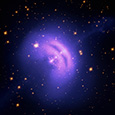

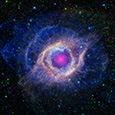
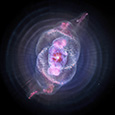
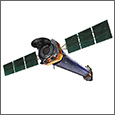




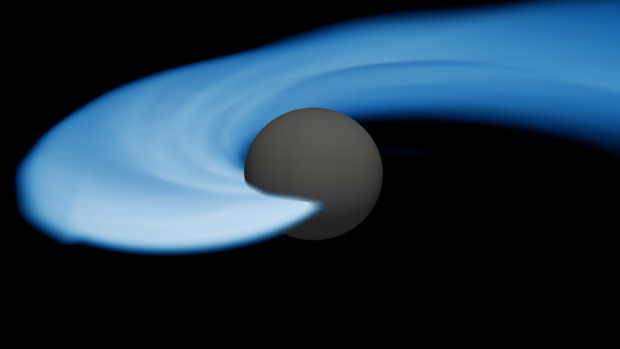
.jpg)


